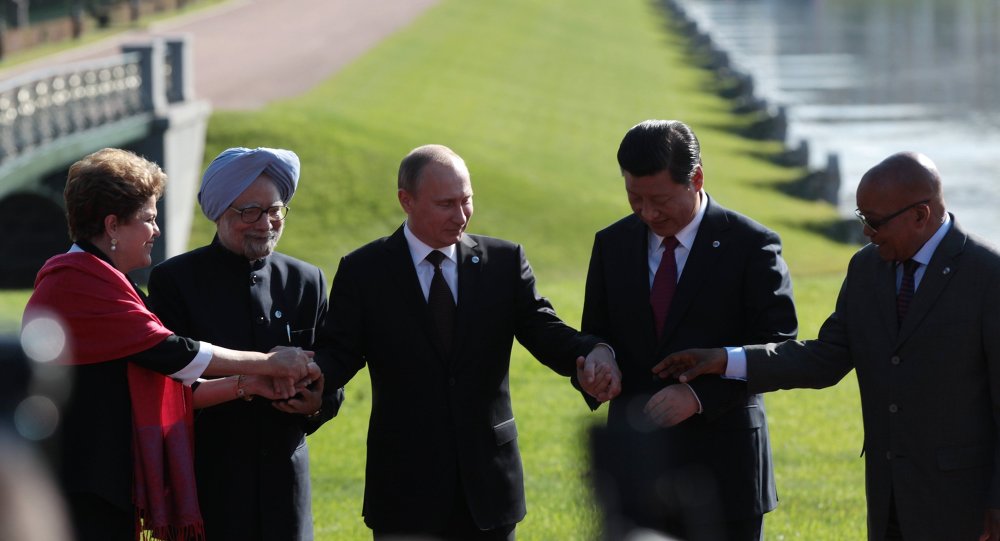
“What will be taken to the summit [in Ufa] is the strategy for intra-BRICS cooperation and investment. That will be tabled at the summit and adopted at the summit,” South Africa’s Trade and Industry Minister Rob Davies told Sputnik after the ministerial meeting in Moscow.
Russia’s Economic Development Minister Alexei Ulyukaev, who chaired the meeting, pointed out that the strategy was the first comprehensive document of the kind and introduced entirely new areas of cooperation such as physical, institutional and people-to-people connectivity.
“For the first time our countries managed to negotiate and finalize the comprehensive document – the Strategy for BRICS Economic Partnership – that touches upon the responsibility of different ministers and requires high-level coordination.”
The meeting of BRICS trade ministers also debated a batch of initiatives on trade, economy and investment, including cooperation on e-commerce and MSMEs (Micro, Small and Medium-sized Enterprises) that was put forth by Russia and India.
In the past six year, the five partner countries boosted trade flows inside their group by over 70 percent, from $168 billion in 2008 to $291 billion in 2014, Ulyukaev said. He added this showed that the nations were on the right path.
Now BRICS is seeking to extend cooperation to other organizations like the World Trade Organization (WTO), the Group of 20 club of world’s biggest economies, as well as the fledgling Eurasian Economic Union.
Ulyukayev added that Moscow, the current rotating president of BRICS, has prepared a package of 50 projects, proposals from local companies and industries as part of the joint BRICS roadmap through 2020.
“Russia attaches great importance to the development of interaction between Russia and the BRICS countries. This is a priority of our foreign policy,” he emphasized.
Following the BRICS Trade Ministers Meeting, delegations from Brazil, Russia, India, China and South Africa will head to the Russian city of Ufa for the 7th BRICS Summit.